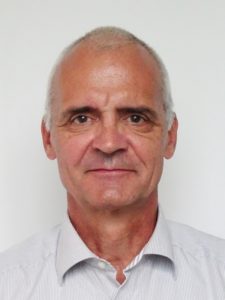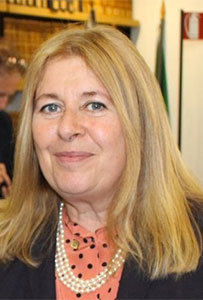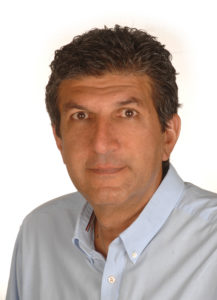Keynote Speakers
Lutz Nasdala, Universität Wien, Austria
 Lutz Nasdala is full professor of mineralogy and spectroscopy working at Universität Wien, Austria. He received his doctoral degree in mineralogy at the Institute of Theoretical Physics, Freiberg Mining Academy, Germany. After several PostDocs, including University of Hawaii and Curtin University of Technology Perth, he completed his habilitation at Johannes Gutenberg University, Mainz, Germany. He was awarded a Marie Curie Chair of Excellence in mineral spectroscopy (2006–2009) by the European Commission, which was the first ever Excellence Chair in mineralogy. His current research interests include defects and internal textures of minerals, gemstone analysis, accessory minerals, and irradiation damage.
Lutz Nasdala is full professor of mineralogy and spectroscopy working at Universität Wien, Austria. He received his doctoral degree in mineralogy at the Institute of Theoretical Physics, Freiberg Mining Academy, Germany. After several PostDocs, including University of Hawaii and Curtin University of Technology Perth, he completed his habilitation at Johannes Gutenberg University, Mainz, Germany. He was awarded a Marie Curie Chair of Excellence in mineral spectroscopy (2006–2009) by the European Commission, which was the first ever Excellence Chair in mineralogy. His current research interests include defects and internal textures of minerals, gemstone analysis, accessory minerals, and irradiation damage.
The keynote lecture “Raman spectroscopy – How it all began” attempts to give a historic overview of the discovery of Raman scattering, and will provide related information. Sir Chandrasekhara Venkata Raman (1888–1970) was a renowned physicist; a remarkably intelligent, determined and enthusiastic person. His ground-breaking discovery of energy shift upon light scattering, first announced 28 February 1928, earned him the Nobel Prize in Physics in 1930, thus making him the first Indian to receive a Nobel Prize in science. Raman is now adored in his mother country, for his outstanding contributions. Since 1987 India celebrates 28 February as the National Science Day in schools, colleges, universities and other institutions all across the country, to commemorate and pay tribute to the discovery of the Raman effect.
Webpage: https://mineralogie.univie.ac.at/scistaff/lutz-nasdala/
Email: lutz.nasdala@univie.ac.at
Maria Luce Frezzotti, Università degli Studi di Milano-Bicocca, Italia

Maria Luce Frezzotti, PhD, is a full professor of petrology at the University of Milano-Bicocca in Milan, Italy. Since 2021, is Dean of the Doctoral School. Before her current role, she worked as a postdoctoral fellow at the Vrije Universiteit in Amsterdam and as an associate professor at Siena University. Maria Luce’s research primarily focuses on fluid phases in geological processes. She utilises various approaches, including Raman spectroscopy, geochemistry and thermodynamics, to investigate diamond formation, metamorphic processes, mantle metasomatism, and volcanism. Her scientific contributions were recognised with the medal of the Accademia delle Scienze, detta dei XL, the National Academy of Science. She is a fellow of the Mineralogical Society of America. Additionally, she has initiated numerous efforts to promote equity, diversity, and inclusion in her field to foster a more inclusive scientific community.
The lecture on “Raman Microspectroscopy to Unravel Earth’s Deep Carbon Cycling” discusses recent research that highlights the ability of Raman spectroscopy to characterise geogenic carbon, offering high-resolution detailed insights into different carbon form features (e.g., speciation in aqueous solutions, crystalline structure, and fluid isotopic signature) by non-destructive, site-specific, and spatially resolved labelling at the microscale.
Webpage: https://www.unimib.it/maria-luce-frezzotti
Email: maria.frezzotti@unimib.it
Invited Speaker
Michael Mondanos,Silixa Ltd (Luna Company)

Michael Mondanos is the Vice President of the Environmental and Infrastructure Group at Silixa Ltd (Luna Company). Michael joined Silixa as a Business Development Manager for industrial monitoring applications in 2011. Prior to joining the company, he worked a number of years in the field as a Senior Engineer and Project Manager in the energy sector. Michael has a bachelor’s degree in Applied Physics (solid state physics), holds a master’s degree in Communications & Radio Engineering from King’s College and a PhD in optical fibre instrumentation from Imperial College, University of London. Michael is responsible for expanding upon Silixa’s position as a leading provider of distributed sensing technology into the environmental, alternative energy and industrial sectors. He has been instrumental in introducing new measurement technology to the emerging Carbon Capture Utilisation and Storage market including thermal profiling, plume, passive seismic and microseismic monitoring. He has authored several international publications and is a widely acknowledged expert in applying Distributed Fibre Optic Sensing to the challenges of the green energy sector.
His presentation introduces an application of Raman spectroscopy to measure distributed temperature in optical fibres using backscatter light. The technology has been applied in systems to fulfil the Measurement Monitoring and Verification requirements in utilisation and storage of CO2 in aquifers and depleted oil and gas reservoirs.
